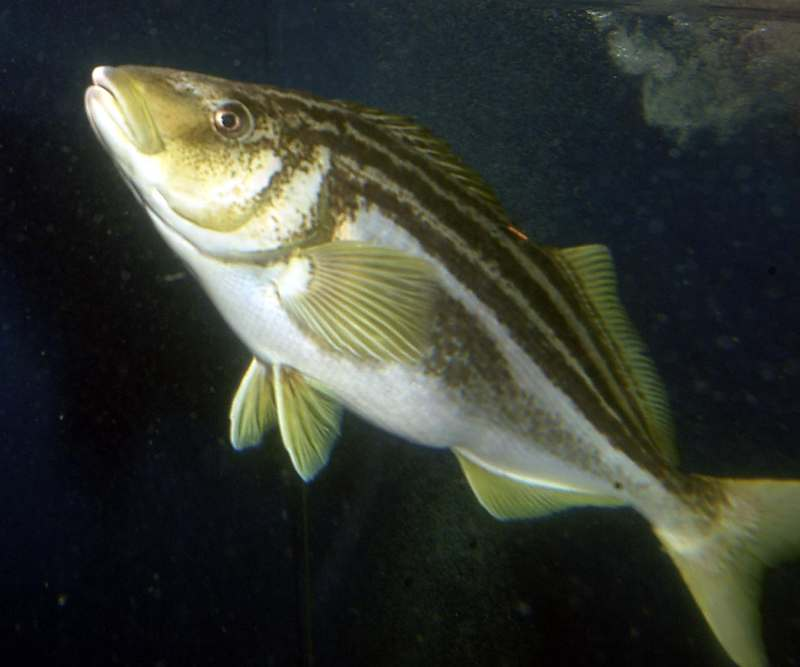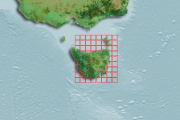Oceans | Marine Biology | Fish
Type of resources
Topics
Keywords
Contact for the resource
Provided by
Years
-

This data represents research conducted as part of a PhD project on Striped Trumpeter (Latris lineata). Recorded the prevalence of Kudoa neurophila (a myxozoan parasite formerly known as Pentacapsula neurophila) in relation to age for hatchery reared Striped Trumpeter using histology and PCR testing. Histology and in situ hybridisation techniques were incorporated into the study of the histopathology of the disease caused by this parasite to elucidate its entry point on the fish host and migratory pathway to terminal stage sporulation.
-
Between January and March 2003, 25 (15 females, 9 males, 1 no sex recorded) draughtboard sharks, sourced from the Crayfish Point Reserve and the east coast of Tasmania (42-43°S, 147-148°E), were fitted with the acoustic transmitters to investigate movement behaviour.
-

Adult reproductive data for redbait is based on collections taken by midwater trawling during the spawning season and includes the biological information - size, sex, reproductive condition (weight and stage). Histological examination of mature ovaries provides information on spawing activity and preserved gonads are examined to determine batch fecundity.
-
The data is quantitative abundance of fish and megafaunal invertebrates and algal % cover derived from transect based counts at a wide range of locations across Temperate Australia. The methods are described in detail in Edgar and Barrett (1997). Primarily the data are derived from transects at 5 m depth and/or 10 m depth at each site surveyed. Methods were initially developed for research on temporal changes following protection in Tasmanian MPAs (Maria Is, Tinderbox, Ninepin Point, Governor Island). Further research has collected data in Tasmania, in MPA planning surveys (e.g. St Helens, Waterhouse Region, Low Head, Lillico Beach, Rocky Cape), an oil spill assessment (Low Head), and in studies and surveys in new Tasmania MPAs (Port Davey and the Kent Group). The data represented by this record was collected in MPA planning surveys and for opportunistic surveys such as the Low Head oil spill assessment. In many cases the dataset involved temporal replication (year scale).
-

This data represents research conducted as part of a PhD project on Striped Trumpeter (Latris lineata). Recorded taxonomy of copopod parasites and investigated potential treatments over the lifecycle of two parasites: caligus and condracantha, in hatchery reared Striped Trumpeter.
-
SCUBA surveys and mark-recapture of seahorse populations in Sydney Harbour using visible implant fluorescent elastomer.
-
Between January 2000 and January 2007, sharks were tagged during routine fishery dependent and independent rock lobster catch sampling trips around southwestern and eastern Tasmania and in the Crayfish Point Reserve. For each shark, sex, total length and clasper length (males) were recorded.
-
Landings surveys of bycatch of Solegnathus assessed from interviews with fishers in important fishing ports of NSW and Victoria, ranging from the Brunswick-Byron co-op to Portland in Victoria.
-
A single database has been implemented to store catch sampling and targeted research data collected since the late 1990s. In addition, data for key species e.g. striped and bastard trumpeter, has been uploaded from historic data bases to provide a complete dataset for the key species. Commercial catch sampling plus opportunistic collections of key scalefish species provide size and age structure information for catches. Where feasible additional biological information e.g. sex and reproductive status is collected.
-
Assessment of trade in Australian syngnathids was estimated from semi-structured interviews with traditional medicine merchants and aquarium businesses in Perth, Sydney, Adelaide, Brisbane. A database of official records of international trade in syngnathids was also sourced from Department of Environment & Heritage (Federal).
 IMAS Metadata Catalogue
IMAS Metadata Catalogue